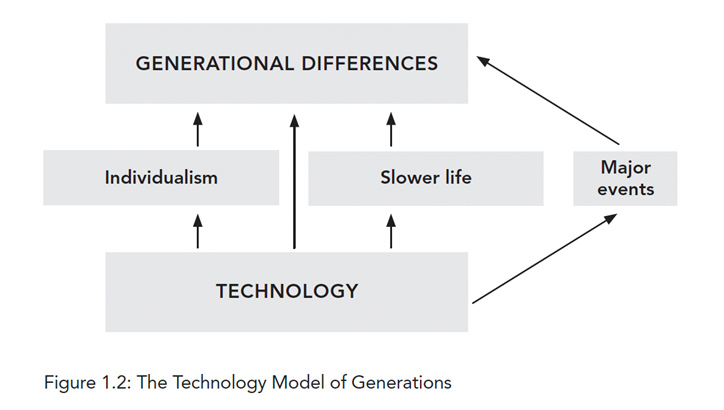Generations exist because cultures change. Just as Japan has a different culture from the U.S., the culture of the 1950s was different from the culture of the 2020s. As cultures change, younger people – who have never known another world – take certain attitudes and worldviews for granted. These specific changes often stem from broad, pervasive forces in the culture.
Traditional theories of generational differences argue that the major events experienced by each generation shape their worldview. However, major events are only a small part of the picture of why (for example) it was so different to grow up in past decades compared to now.
The most impactful force has instead been changes in technology. A hundred years ago, women (and it was always women) had to spend all day doing laundry; the introduction of automatic washing machines changed that. Teens used to socialize in person, but after smartphones and social media became more common, socializing moved mostly online.
Technology also changes cultures via secondary forces, including increasing individualism (more focus on the self and less on others) and a slower life (taking longer to grow up and longer to grow old). In Generations, I model the causes of generational differences like this:

Here’s just one example of technology’s downstream impact. Advances in medical technology have meant longer lives. In 1940, life expectancy was just 63. Even with COVID around, life expectancy was 77 in 2021. Technology has also led to a more complex society requiring more years of education. For both of these reasons, the entire developmental trajectory has slowed. Adolescents take longer to do adult things (like drive, have a job, or date), young adults take longer to get married and have children, and older adults enjoy more years of life (“60 is the new 50.”) These major generational differences in the speed of the life cycle aren’t due to major events; they are due to the downstream effects of technology.


Leave A Comment
You must be logged in to post a comment.